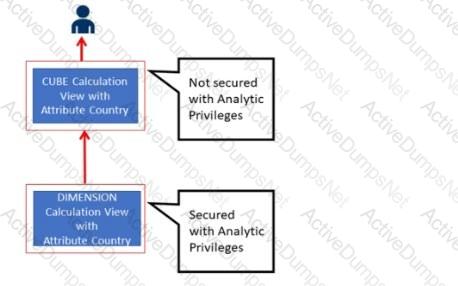Which of the following data sources can you include in a graphical calculation view?Note: There are 2 correct answers to this question.
Which components are part of SAP HANA Cloud?Note: There are 2 correct answers to this question.
A new version of SAP HANA Cloud, SAP HANA database is available from today.If you do not perform the upgrade manually, how much time do you have before your database will be automatically upgraded to the next version?
Which type of join supports a temporal condition in a calculation view?
Your calculation view consumes one data source, which includes the following columns: SALES_ORDER_ID, PRODUCT_ID, QUANTITY and PRICE.In the output, you want to see summarized data by PRODUCT_ID and a calculated column, PRODUCT_TOTAL, with the formula QUANTITY * PRICE.In which type of node do you define the calculation to display the correct result?
What is the recommended tool for developing cloud foundry applications?
Which database features are typically NOT required by analytical applications that run on SAP HANA Cloud?Note: There are 2 correct answers to this question.
What are some of the typical tasks performed by the SAP HANA Cloud modeler role? Note: There are 2 correct answers to this question.
What can you do with shared hierarchies? Note:There are 2 correct answers to this question.
You have linked an underlying node to the star join node to define the data foundation. Which data source type can you then join to the data foundation?
Why would an SQL developer work with SQLScript?Note: There are 3 correct answers to this question.
In a database module, what is the purpose of the .hdiconfig file?
What is the default view node for a cube?
You set the Null Handling property for an attribute but do not set a default value.What is displayed when null values are found in a column of data type NVARCHAR?
What do you use in the definition of a dynamic SQL analytic privilege?
Why would you use the Transparent Filter property in a calculation view?
In your calculation view, you want to consume a custom data source defined using SQLScript.In which type of object do you write your code?
You want to create a star schema using a calculation view. The measures are based on columns from two transaction tables. DIMENSION calculation views provide the attributes.What is the correct approach?
What options do you have to handle orphan nodes in your hierarchy?Note: There are 2 correct answers to this question.
Why do you use the Hidden Columns checkbox in the semantics node of your calculation view?Note: There are 2 correct answers to this question.
Referring to the diagram,

which privileges would a user require to view United States data when querying the CUBE calculation view?
You have imported calculation views from SAP HANA on-premise to SAP HANA Cloud.Why should you switch calculated column expression language from column engine to SQL?
Why would you set the "Ignore multiple outputs for filters" property in a calculation view?
What is the SQL keyword used to process input parameters defined in a calculation view?
Which of the following approaches might improve the performance of joins in a CUBE calculation view?Note: There are 2 correct answers to this question.
You create a table function to remove historic records, sum the current total weekly working hours for each employee, and update the personnel table with the results. The deployment of the table function fails.Which of the following could be a valid reason?